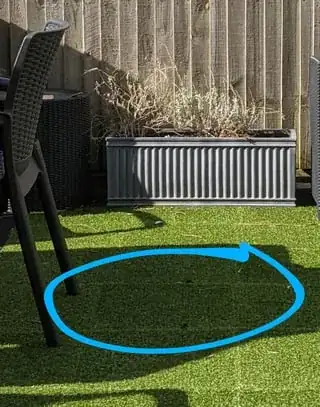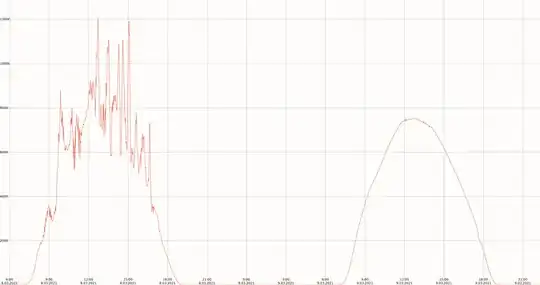Considering the same point in a shadow on the ground, how does the incident light level vary when there's cloud cover diffusing the sunlight compared to no cloud cover?
In sunlight a shadow looks darker relative to the sunlight, but is it actually brighter than when there is cloud cover?
Example comparing the same scene in my garden, where the circled area is is interest.
(diffused sunlight f/1.8 1/385 4.44mm ISO62)

(sharp sunlight f/1.8, 1/1957 4.44mm ISO51)

I appreciate there are many factors that may influence this:
- Height of surrounding objects,
- Reflectivity of surrounding objects
- Time of day
- Thickness of cloud
Does anyone have a way of measuring this? i.e. long exposure of film or light sensor etc.
Update with experimental results
Following @Ruslans suggestion I have taken measurements using my phone Lux meter. It seemed sensitive on phone orientation so I have listed the readings from all orientations here and everaged them.
| Day of March | time | Sunlight | Cloud cover | Lux <- | Lux /\ | Lux -> | Lux / | Lux (Avg) |
|---|---|---|---|---|---|---|---|---|
| 23 | 13:55 | Sharp | thin 10% | 4453 | 5737 | 7130 | 5788 | 5777 |
| 23 | 14:05 | Diffuse | thin 10% | 4589 | 5135 | 5318 | 4295 | 4834.25 |
| 23 | 14:10 | Diffuse | thin 10% | 10041 | 7969 | 9049 | 8495 | 8888.5 |
| 24 | 10:40 | Diffuse | thin 100% | 21060 | 19742 | 17105 | 19145 | 19263 |
By far the highest reading was with 100% light cloud cover providing diffusion from all directions. It doesn't take much cloud cover to push the diffuse light readings above the readings in the sharp shadow though.


